Mike Curtis, Airbnb’s vice president of engineering, tells me he was “shocked” by what he found when he joined the fast-growing marketplace for lodging a little over a year ago.
Call it a pleasant frisson: Curtis tells me he found a culture that was largely self-organized and driven by Airbnb’s mission of making people feel at home anywhere in the world. What it lacked in structure, it made up for in passion. Engineers largely picked their own tasks and worked on them.
With a million guests using Airbnb every month to book space from people renting out spare couches, rooms, apartments, and sometimes even treehouses, there’s no shortage of technical challenges, from searching available lodging to handling international payments between guests and hosts.
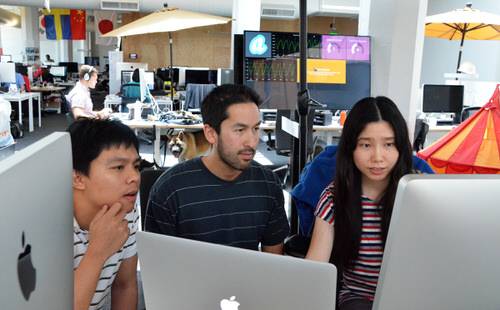
It would have been easy for Curtis, hired to professionalize a fast-growing team of some 50 engineers, to impose a bunch of rules and process from his years running large software teams at Facebook and Yahoo. Instead, he did something brave and figured out how to work with Airbnb’s existing culture.
Curtis recently invited ReadWrite to Airbnb’s airy headquarters in San Francisco’s SoMa district, where we spoke to him and other employees and took photographs of Airbnb engineers, designers, and product managers at work. He’s also published a post outlining his thoughts on Airbnb’s engineering culture, a draft of which he shared with me as part of our discussion.
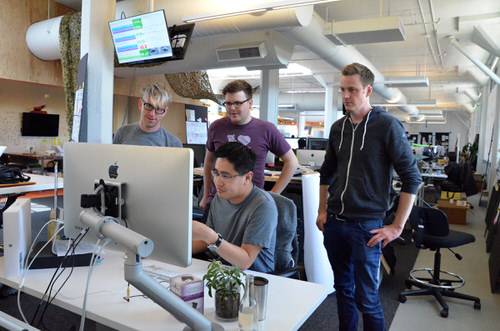
No Management Or New Management?
The question of how to organize a fast-growing, technology-driven company like Airbnb is a crucial one. Doing it the wrong way can lead to stasis or chaos.
Companies as diverse as GitHub, the social-coding company and clothing retailer and Zappos, have adopted a “no-management” structure called Holacracy, where decision-making is spread throughout the organization and people have roles rather than job titles.
Holacracy has come under fire, though, for not providing enough structure and support for employees. The messy departure of prominent developer Julie Ann Horvath from GitHub is an oft-cited example of what can go wrong with such informal systems. Horvath alleged harassment by cofounder Tom Preston-Werner and his wife, and an investigation found that he’d made mistakes in handling her complaints, prompting him to resign. The company hired a more experienced human-resources executive earlier this year and CEO Chris Wanstrath promised to improve conditions.
At the opposite extreme, engineers at large software companies like Google and Microsoft often complain about how their employers have grown ever more corporate. At Google, even the famous “20 percent time” program that lets engineers work on self-directed projects has come under pressure.
Airbnb may have found a middle ground between top-down management and anything-goes self-organization. The company has engineering managers, but it defines their roles in a very different way than what you’d expect.
See also: I Was An Airbnb Hotel Tenant
“In a more traditional organization, goals, objectives, and even tasks flow down to individual contributors,” Curtis told me. “The way we think about it, managers are basically facilitators. Managers exist to get obstacles out of people’s way.”
Those might be information obstacles—helping a technical employee see the bigger picture she’s working within so she can better solve a problem. Or it might be a career obstacle—helping an employee switch teams for an opportunity to grow professionally.
What managers don’t do is give orders, set goals, and define processes. The expectation is that engineers, motivated by Airbnb’s mission and equipped with enough information by their managers, will figure those things out themselves.
“It’s not your manager’s responsibility to tell you how to have impact,” says Curtis.
For example, Ben Hughes, a site reliability engineer, says his role, “connects to the Airbnb mission because it creates a stable platform for guests and hosts.”
Beau Haugh recounted how people from multiple teams came together a couple of weeks ago to upgrade Airbnb’s MySQL databases, voluntarily working on a Saturday night to get it ready ahead of an expected rush of bookings.
Alvin Sng, an internal tools engineer, says his work on the site’s chat function improves communication between customer-service agents and guests. He loves how his work, “helps other employees do their jobs more effectively.”
Surabhi Gupta, a software engineer who works on search and discovery, sees her work as “enabling trips that wouldn’t happen otherwise.” Here’s a recent presentation she gave at OpenAir, a technical conference Airbnb held in April.
http://www.youtube.com/watch/e_7Kr7Al__I
Even as a middle ground between extremes, this style of doing things isn’t for everyone. Some anonymous employee reviews on Glassdoor describe the environment as “disorganized chaos.” Others call it “inspiring” but acknowledge that employees must “take ownership” and solve problems rather than complain about them.
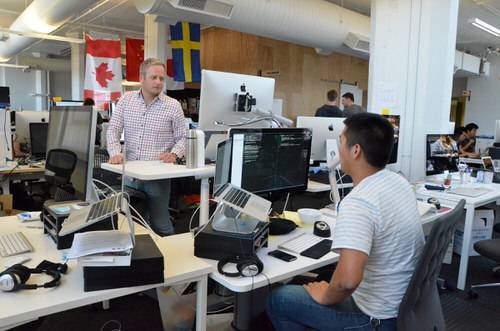
A Hospitable Way Of Doing Business
Airbnb tries to define both its product and its company around the idea of hospitality, which extends to how employees treat each other.
“Being a host is about having empathy,” says Curtis. “Your guest can be a fellow employee. One of the things we value is that helping others takes priority.”
Curtis acknowledges that there’s an apparent conflict between the values of “owning your own impact” and helping others first. After all, if you’re helping someone else, you’re by definition putting whatever task you’ve chosen for yourself on hold.
The way Airbnb resolves that is by pointing out the long-term value to the company of lending a colleague a hand.
“When you have an opportunity to help someone get unblocked, you take that, because that’s usually an opportunity to teach someone,” Curtis says.
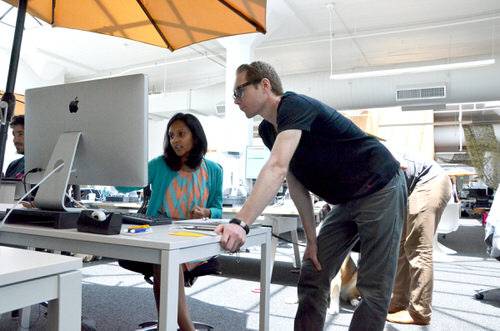
Setting The Standard
Airbnb’s technical personnel work on 14 teams, generally less than 10 people apiece, with a mix of software engineers, product managers, designers, and data scientists. As with individual employees, these teams are largely self-governing. (Airbnb wouldn’t give exact numbers on the engineering team’s current size, but a LinkedIn search suggests that it now has more than a hundred members—more than double the size of the team Curtis inherited when he joined the company.)
“We have a unit of autonomy around individuals,” says Curtis. “We also have a unit of autonomy around teams.”
Where Airbnb has standardized around processes, it’s generally a bottom-up process, lightly steered by management. In meetings, Curtis and his engineering managers tell stories about successful practices, which then spread from team to team.
“We have a unit of autonomy around individuals. We also have a unit of autonomy around teams.” —Airbnb’s Mike Curtis
When Curtis arrived at Airbnb, individual engineers often pushed code to production without having someone else review it, which resulted in bugs that took time to fix and could have been avoided with an extra set of eyes. Curtis encouraged people to consider a process called “pull requests,” a lightweight way of having others review software before it goes into production. An Airbnb engineer even built a tool to speed up pull requests, making the new way of coding easier to adopt.
Another example: When some engineers discovered that Hackpad made a better tool for documentation than an existing tool from GitHub, teams rapidly switched over. Rather than obeying a top-down mandate, they just followed each other’s example.
“If you can introduce an idea and have that idea stand on its own merits and be organically adopted by the team, it’s the team’s decision,” says Curtis.
He believes that this system for adopting processes allows Airbnb to make more radical improvements in productivity—what he calls “step functions,” after the mathematical term.
“The impact of overly standardizing is that you get stuck in your ways,” says Curtis. “By introducing just a little bit of chaos, you can find those step-function improvements.”
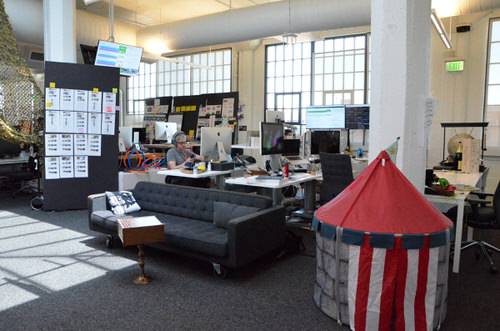
Airbnb needs to make those big steps to keep up with its marketplace’s runaway growth. It’s not clear if its current systems will keep up forever. Curtis isn’t dogmatic about the current way of doing things—he’s realistic that it will keep changing.
I asked him if Airbnb had intentionally sought this middle ground between stasis and chaos, between top-down management and Holacracy.
“I don’t think we ever consciously asked ourselves that philosophical question,” Curtis says. “The aim is to do what works best for us at this stage of our growth. Fundamentally we believe that engineers having more control over what they work on is more motivating and leads to higher-quality results.”
Unlike a big hotel chain, Airbnb can’t dictate how its hosts set up bedrooms or welcome guests. That quirky individuality is part of the charm of staying at an Airbnb. And it’s become a part of the way the company does business, too.
Photos and additional reporting by Stephanie Chan










